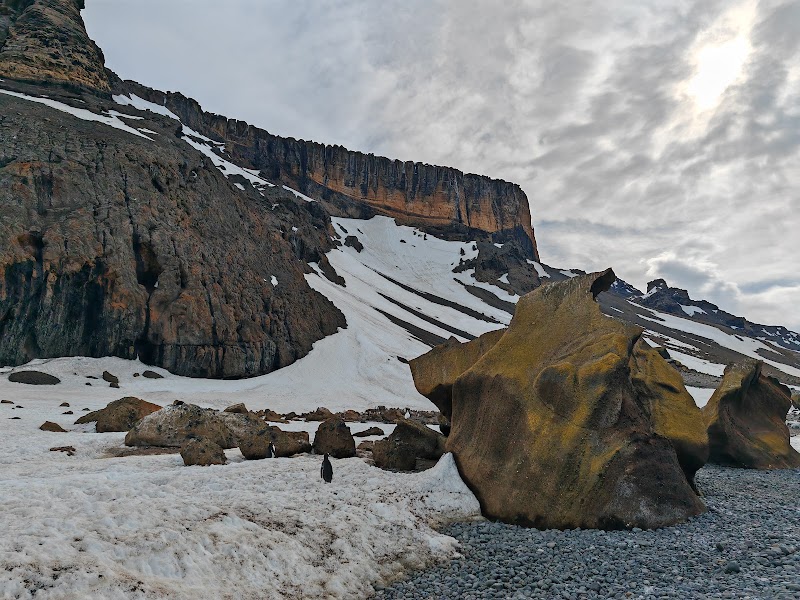
Antarctic Treaty System Adventures
The Antarctic Treaty System is a pioneering international agreement dedicated to preserving the continent of Antarctica for peaceful and scientific purposes. It uniquely balances environmental protection with international collaboration.
Popular Activities
Explore the Untamed: Discovering the Antarctic Treaty System Through the Lens of N/A Photography
Imagine standing at the edge of the world, where ice meets ocean and scenes unfold like paintings crafted by nature's hand. The Antarctic—a land of extremes—offers not just breathtaking landscapes but also a profound legal and historical framework guiding human interaction with this untouched environment: the Antarctic Treaty System. This unique arrangement governs the vast, icy realms while allowing adventurers and scientists alike to explore its enigmatic beauty. As you plan your journey into this remote wilderness, understanding the treaty and capturing its essence through the lens of N/A photography will elevate your experience.
The Antarctic Treaty, established in 1961, promotes peace, scientific research, and environmental preservation. It prohibits military activity and mineral mining while emphasizing cooperation among countries. Picture yourself witnessing research teams from various nations working side by side, united by a shared passion for exploration and understanding. This collaborative spirit turns a trip to Antarctica into more than just a vacation; it transforms it into a profound encounter with our planet’s last great wilderness, where every step taken holds moral weight.
Your adventure begins long before you set foot on the Antarctic Peninsula. Preparing for the cold is essential, and the right gear makes all the difference. Invest in high-quality, insulated clothing that can withstand frigid temperatures and biting winds; layering is key. Sturdy, waterproof boots will allow you to traverse the icy terrain comfortably. As you embark, envision yourself gliding across the ice, with snow crunching beneath your feet and the crisp air invigorating your senses.
Hydration is vital in this environment where the cold can mask your body's thirst. Carry a reliable water bottle insulated against the cold, ensuring you remain hydrated as your explorations take you across vast stretches of stunning glacial landscapes. During your photography ventures, keep your camera close, sealed in a protective case, ready to capture the mesmerizing sights. Dramatic icebergs sculpted by the wind and waves rise majestically, while the vibrant colors of the sunset bleed into the endless sky—a splendid sight that will awaken your inner artist.
The Antarctic Treaty fosters a sanctuary for wildlife, creating an unparalleled opportunity for nature photography. Picture a colony of Gentoo penguins waddling across the ice, or seals basking on sun-kissed rocks, the wind ruffling their sleek fur. Approach them with respect and awareness, keeping a safe distance as you aim to capture their unfiltered lives. A telephoto lens can be your best ally here, allowing you to focus on the delicate details of these remarkable creatures without intruding on their space.
As you navigate your way through the land of ice and wonder, be sure to visit research stations, where scientists live and work. Here, the intimate bustle of human endeavor amid the vast, silent landscape is a visual paradox worth photographing. The bright colors of the stations contrast starkly against the whites and blues of the ice, providing a striking backdrop for your adventure narrative.
The use of N/A photography in this landscape can elevate your storytelling, encapsulating not just the beauty of the environment but also the ethos of the Antarctic Treaty. Consider capturing images that reflect the interwoven complexity of conservation and exploration, highlighting the delicate balance between human curiosity and responsibility. Frame your shots to demonstrate the fragile nature of the ice and wildlife, perhaps even illustrating the impacts of climate change which the Treaty aims to combat through international cooperation.
Every moment spent in the Antarctic, from the exhilaration of a breathtaking view to the quiet contemplation of a drifting iceberg, serves as a reminder of our collective call to safeguard this unique ecosystem. Engage deeply with your surroundings, let the isolation fuel your creativity, and return home, not just with photographs but with a renewed commitment to protect our planet. Prepare, explore, and capture the spirit of Antarctica—a place where adventure and responsibility unite.
Plan Your Visit
Everything you need to know to prepare for an unforgettable trip to Antarctic Treaty System.
Entrance Requirements
All visitors require permits; managed by national Antarctic programs.
Best Time to Visit
Visitation is primarily during the Antarctic summer months, November to March, due to milder weather.
Visitor Information
Research stations serve as centers for limited visitor interaction.
Getting There
Access is typically via ship or, irregularly, by air; there are no formal roads.
Weather & Climate
Antarctica's climate is the coldest on Earth, with summer temperatures ranging from -20°F to 20°F. Winters can plummet to -70°F or lower.
Conservation Efforts
Climate change presents significant challenges, impacting ice melts and ecosystem health. Human activity is highly controlled to minimize disruptions.
Camping in Antarctic Treaty System
Find the perfect spot to stay overnight and immerse yourself in the details.
Top Trails
Observation Hill Trail
Offers panoramic views of the McMurdo Station and surrounding ice scape.
Trailblazer Tips
Visitors should ensure their presence is eco-friendly and comply with strict environmental protocols.
Antarctica experiences polar seasons; travel mainly occurs between November and March.
All visits require permits, which are regulated under stringent international guidelines.
Special gear such as insulated clothing and UV protection is necessary due to extreme weather conditions and high sun exposure.
